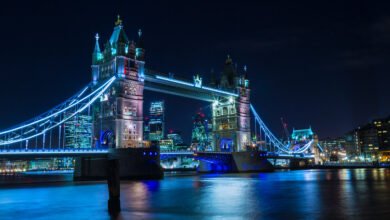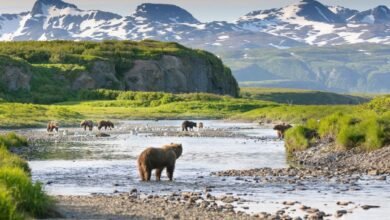
Embarking on a journey to Plan Trip to Antarctica is a stunning exploration into an entire world of natural wonders. Adorn with mysterious and awe-inspiring landscapes, this frozen realm offers an enticing invitation to those searching for a fantastic experience. Plan Trip to Antarctica is more than just organization. It is an opportunity to curate an unforgettable experience. Stepping onto its snowy landscape, you find yourself in a shelter where resilient wildlife flourishes amid adversity, and captivating landscapes are engraved into your soul.
However, organizing a Trip to Antarctica requires more than the usual preparation. It’s an art of creating moments that last forever. As you set foot on this snowy landscape, every detail, from choosing the right gear to building mental resilience, becomes a brush stroke in painting your unique journey. Developing a personal plan is key to unlocking the full potential of your Antarctic odyssey. So, plan your trip to Antarctica carefully, immersing yourself in the raw, untouched beauty that defines this extraordinary adventure.

Understanding the challenge
“Understanding the Challenge” of Plan a Trip to Antarctica explores the unique demands posed by this frozen wilderness. Antarctica requires a deep understanding of its challenges with its intense weather conditions, isolation, and surprising landscape. Traveling snowy expanses, tolerating cold temperatures, and preparing for rapidly changing weather patterns are critical aspects of this adventure.
Recognizing the need for specialized gear, self-sufficiency, and a deep respect for the unyielding forces of nature are essential. Mental and physical preparation becomes paramount as travelers embark on an expedition where the environment has a hand.
This understanding extends beyond logistical aspects. It includes acknowledging inherent difficulties, accepting the need for adaptation, and committing to responsible exploration. Anticipating and respecting the challenges ensures a safer, more enriching experience, allowing adventurers to embrace the raw beauty and extraordinary resilience that defines Antarctica.

Researching Antarctic tours and operators
Conducting a comprehensive exploration of Antarctic tour providers requires thorough research and evaluation. This process guarantees a secure, enjoyable, and meticulously organized trip.
It involves factors like examining the reputation and experience of different tour operators, guides’ expertise, safety records, and environmental practices.
Gaining insight through reviews and testimonials from past travelers is valuable. Prospective adventurers should also assess itineraries, services, and the overall dedication to sustainable tourism. This research is fundamental to choosing a reliable operator that matches the traveler’s preferences and values for the best Antarctic experience.

Setting a budget
“Budget Setting” determines and allocates financial resources for a planned trip to Antarctica. It involves considering the diverse expenses linked to the expedition, encompassing transportation, accommodation, tour packages, equipment, and potential additional costs.
Creating a well-defined budget empowers travelers with financial control, enabling them to allocate funds judiciously to address their particular requirements and preferences. This step is necessary to avoid overspending, allowing individuals to enjoy their Antarctic adventure without financial stress. It also helps make informed decisions about rest level, duration, and extra activities based on available financial resources.
Choosing the Right Time to Visit
“Choosing the Right Time to Visit” in Antarctica travel planning involves choosing the most suitable period for the expedition. Antarctica experiences extreme weather conditions, making this visit’s timing important. From November to March, the Australian summer is considered the best time.
In this timeframe, temperatures become comparatively gentle, and extended daylight hours provide more conducive conditions for exploration. Simultaneously, this period aligns with heightened wildlife activity, presenting excellent chances to observe penguins, seals, whales, and seabirds. The right time enhances the overall experience, ensuring a more comfortable and wildlife-rich trip.

Obtaining the necessary permits and documents
“Obtaining the required permits and documentation” is a crucial stage in the preparation phase for Plan Trip to Antarctica. The Antarctic Treaty System regulates Antarctica, so travelers must secure particular permits and possess the necessary documents before initiating their expedition.
The requisite licenses can differ depending on the nature of planned activities, encompassing wildlife observation or specific research endeavors. Additionally, having a valid passport and meeting the entry requirements specified by the tour operator and relevant authorities is essential. This step ensures compliance with regulations and contributes to responsible and sustainable exploration of the pristine Antarctic environment.

Travel and accommodation bookings
“Securing Travel and Lodging” marks a pivotal juncture in shaping Antarctic expedition plans. Following the selection of a tour operator and the confirmation of travel dates, the subsequent phase encompasses reserving round-trip flights to Antarctica and organizing accommodations for the entire journey.
Following the advice of the tour operator, travelers refine their travel plans and arrange necessary accommodations before and after the expedition. Thorough management of logistical details guarantees a smooth and coordinated travel experience, enabling adventurers to completely engage with the stunning landscapes and wildlife of Antarctica’s frozen environment. To enhance your travel preparation, including optimizing suitcase space, explore our guide on how to fold a shirt for travel efficiently.
Preparation of elements
“Preparing for the elements” involves preparing for Antarctica’s challenging and extreme conditions. This step is a comprehensive approach to acquiring and packing essential clothing and equipment for travel. Necessary equipment like waterproof attire, insulated footwear, and thermal layers are vital for facing cold temperatures and snowy terrains in Antarctica.
Adhering to a detailed packing list from the tour operator ensures that adventurers are sufficiently prepared to face the challenging conditions of the continent. Sufficient preparation ensures personal comfort and safety and enhances enjoyment and immersion in the frozen landscape.

Health and safety considerations
“Health and safety considerations” are essential to planning an Antarctic expedition. This step includes prioritizing the well-being of travelers while taking proactive measures to address potential health risks in extreme environments. Ensuring your readiness for the Antarctic adventure is paramount. Seek guidance from a healthcare professional, confirm vaccinations, discuss any pre-existing health considerations, and receive advice on region-specific health precautions.
Enhancing your safety involves acquainting yourself with emergency evacuation procedures and thoroughly understanding the locations of medical facilities in Antarctica. This individualized approach ensures a voyage where your well-being takes precedence, enabling you to engage entirely in Antarctica’s awe-inspiring experiences.

Environmental responsibility
In exploring Antarctica, the commitment to “environmental responsibility” signifies a vow to protect the delicate ecosystems of this age-old continent. It involves endorsing rigorous guidelines and incorporating practices that reduce the environmental footprint of human activities.
Travelers adhere to waste disposal regulations and champion thoughtful waste management to leave the smallest ecological footprint. Additionally, demonstrating reverence for wildlife and their habitats through mindful viewing practices becomes paramount in preserving Antarctica’s unique biodiversity.
Individuals actively champion the enduring sustainability and protection of this extraordinary and delicate environment by endorsing tour operators committed to environmental stewardship and contributing to conservation initiatives.

Conclusion
Ultimately, organizing an Antarctic expedition is a harmonious combination of intricate planning and a deep respect for untouched wilderness. As travelers navigate the snowy landscape, challenges become a path to unforgettable moments.
Similar to a guiding compass navigating a ship through unknown seas, this manual guarantees an expedition that captures the magnificence of Antarctica. Anticipate the unforeseen, cherish each moment, and depart with memories engraved in your heart, eternally echoing the splendor of the southernmost continent.
FAQS
Are there age restrictions for Antarctic expeditions?
Although there is no strict age limit, difficult conditions may make travel unsuitable for young children or those with specific health concerns. Consult your tour operator for guidance.
What kinds of interactions with wildlife are possible?
Various wildlife, such as seabirds, whales, seals, and penguins, can be found in Antarctica. Summertime in Australia makes for fantastic viewing.
How can I contribute to Antarctic conservation?
Back environmentally conscious operators with robust policies, follow the principles of leaving no trace, and engage with organizations dedicated to preserving the distinct ecosystems of Antarctica.
When is the optimal period to visit Antarctica?
From November to March, the austral summer presents a perfect window for an expedition to the continent. During this period, milder temperatures, longer days, and increased wildlife activity enhanced the overall experience.








